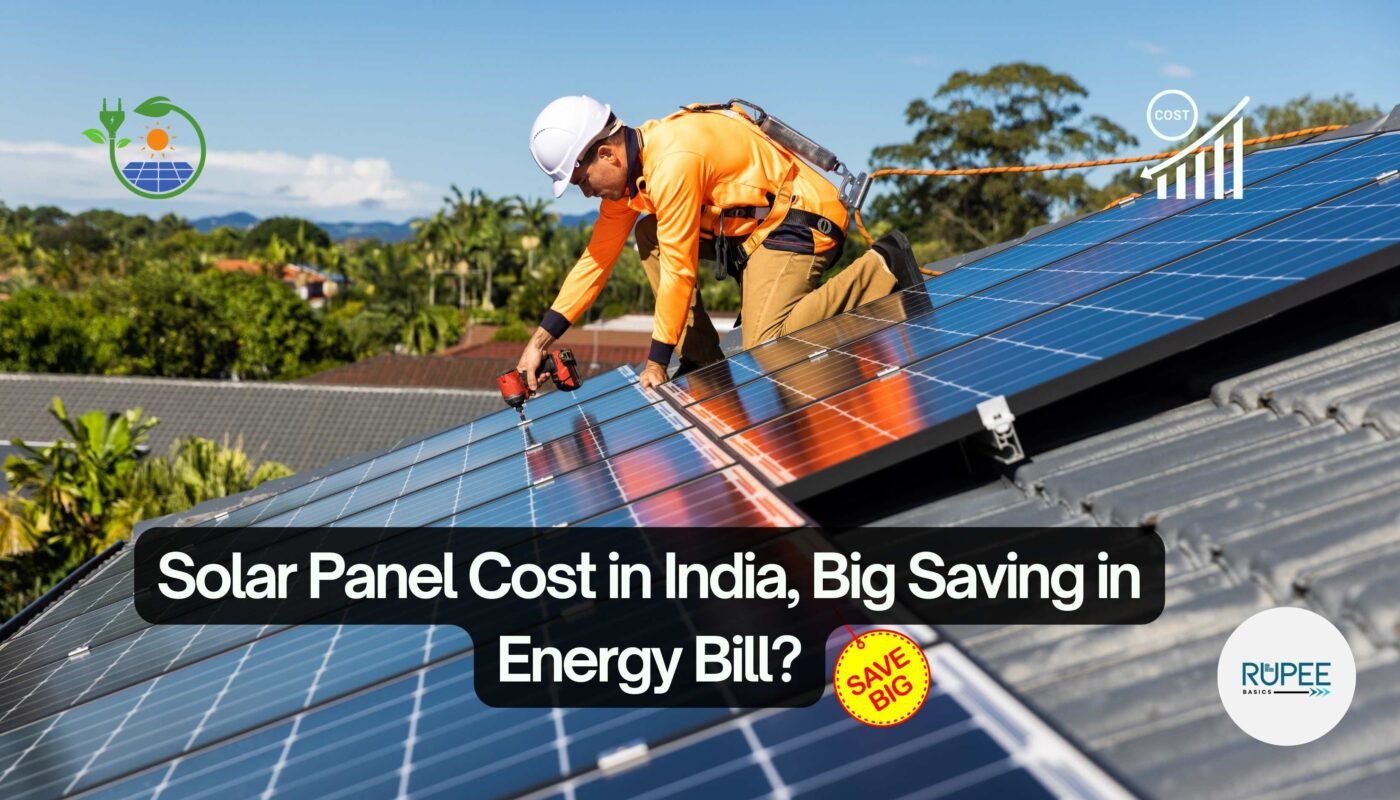Investing in solar energy has become increasingly popular in India, thanks to its potential for reducing electricity bills and promoting sustainable living. Understanding the cost per watt of solar panels is crucial for homeowners and businesses considering this transition. In this blog, we’ll explore the factors influencing solar panel prices in India, provide an example calculation, and address common questions to help you make an informed decision.
Understanding Solar Panel Cost Per Watt in India
The cost per watt is a standard metric used to evaluate the price of solar panels. It represents the cost associated with each watt of solar power capacity installed. Several factors influence this cost in India:
- Type of Solar Panel:
- Monocrystalline Panels: Known for higher efficiency and longevity, these panels are typically more expensive.
- Polycrystalline Panels: Offer a balance between cost and efficiency, making them a popular choice among consumers.
- Thin-Film Panels: Generally less expensive but also less efficient, suitable for specific applications.
- System Capacity: Larger systems often benefit from economies of scale, reducing the per-watt cost.
- Quality and Brand: Premium brands with advanced technology may command higher prices but offer better performance and warranties.
- Installation and Additional Components: Costs associated with inverters, mounting structures, batteries (if opting for storage), and installation services contribute to the overall expense.
- Government Subsidies and Incentives: Financial assistance from government schemes can significantly lower the effective cost.
Average Cost Breakdown
As of 2025, the average cost of installing a home solar panel system in India varies based on the factors mentioned above. Here’s a general breakdown:
- Solar Panels: The primary component, with costs influenced by type and efficiency.
- Monocrystalline Panels: Approximately ₹37,500 to ₹42,000 per kilowatt (kW). (efficient, costly)
- Polycrystalline Panels: Typically range from ₹25,000 to ₹35,000 per kW. (affordable, less efficient)
- Inverters: Essential for converting DC power to AC, with prices ranging from ₹20,000 to ₹80,000, depending on type and capacity.
- Mounting Structures: Costs can vary between ₹10,000 to ₹50,000, influenced by installation complexity.
- Batteries (Optional): For storage solutions, adding ₹20,000 to ₹1,00,000 or more, based on capacity and brand.
- Installation Charges: Labor and associated expenses may range from ₹20,000 to ₹1,00,000.
- Government Subsidies: Can cover 20% to 70% of the total cost, depending on the region and specific schemes.
Example Calculation
Let’s consider the installation of a 5kW on-grid solar system:
- Solar Panels: 5 kW × ₹35,000 (average polycrystalline panel cost) = ₹1,75,000
- Inverter: Approximately ₹40,000
- Mounting Structures: Around ₹25,000
- Installation Charges: Estimated at ₹30,000
- Total Cost Before Subsidy: ₹2,70,000
- Assuming a 30% Government Subsidy: ₹2,70,000 × 0.30 = ₹81,000
- Total Cost After Subsidy: ₹2,70,000 – ₹81,000 = ₹1,89,000
This example illustrates how subsidies can make solar installations more affordable.
Government Subsidies & Benefits
- Central Financial Assistance (CFA): Up to ₹18,000–₹54,000 for 3–10kW systems.
- Net Metering: Sell excess power to the grid.
- Tax Benefits: Accelerated depreciation for businesses.
5 Tips to Reduce Solar Panel Costs
1️⃣ Compare quotes from 3–4 trusted installers.
2️⃣ Opt for Tier-1 panels (durable, better ROI).
3️⃣ Use subsidies and state schemes.
4️⃣ Buy during festivals for discounts.
5️⃣ Start small and expand later.
How to Purchase and Install a Solar Panel System in India
Transitioning to solar energy involves several key steps:
- Assess Your Energy Requirements:
- Evaluate your household’s average electricity consumption to determine the appropriate system capacity.
- Check your monthly electricity bill to estimate consumption (e.g., 500–800 units/month = 5kW system).
- Use online solar calculators or consult installers for a tailored solution.
- Site Evaluation:
- Ensure your rooftop receives adequate sunlight and has sufficient space for the installation.
- Research and Select a Reputable Solar Provider:
- Look for certified and experienced solar companies that offer quality products and services.
- Obtain Quotations and Compare:
- Request detailed quotes from multiple providers, comparing costs, warranties, and included services.
- Explore Financing and Subsidies:
- Investigate government subsidies and financing options to reduce upfront costs. Submit documents (Aadhaar, electricity bill, house ownership proof) via the National Portal for Rooftop Solar.
- Installers often help with subsidy paperwork.
- Finalize the Purchase:
- Once satisfied with a provider, proceed with the purchase, ensuring all agreements are documented.
- Installation Process:
- The solar company will handle the installation, including mounting panels, setting up inverters, and connecting to the grid.
- Inspection and Commissioning:
- After installation, the system undergoes inspection and testing to ensure optimal performance.
- Monitoring and Maintenance:
- Regularly monitor system performance and schedule periodic maintenance to maintain efficiency.
Appliances Powered by a 5kW Solar System
A 5kW solar system can effectively power various household appliances. Here’s an example of what such a system can support:
- Lighting:
- 12 LED lights
- Fans:
- 6 ceiling fans
- Kitchen Appliances:
- Refrigerator
- Microwave oven
- Entertainment:
- Television
- Climate Control:
- 1-2 air conditioners (1.5 tons around)
- Other Appliances:
- Washing machine
- Laptop and mobile charging devices
Energy-Saving Tips
- Use BLDC fans and 5-star rated appliances to reduce load.
- Shift high-consumption tasks (geyser, iron) to daytime.
Conclusion
Transitioning to solar energy in India involves an initial investment that varies based on several factors, including panel type, system capacity, and additional components. Understanding the cost per watt helps in evaluating the feasibility and planning your budget effectively. Government subsidies further enhance affordability, making solar energy a viable and sustainable option for many.
Solar panel costs in India have dropped by 70% in the last decade, making it the perfect time to switch. With ₹50–₹55 per watt, government subsidies, and long-term savings, solar energy is a win-win for your wallet and the planet. Start your solar journey today!
FAQs
1. What is the average cost per watt for solar panels in India?
The average cost per watt ranges from ₹25 to ₹50, depending on factors like panel type, brand, and system capacity.
2. How long does it take to recover the investment in a solar panel system?
The payback period typically ranges from 6 to 8 years, influenced by factors such as system cost, electricity savings, and available subsidies.
3. Are there maintenance costs associated with solar panels?
Solar panels require minimal maintenance, primarily periodic cleaning and inspections, ensuring optimal performance over their lifespan.
4. Can I install a solar panel system in a rented property?
Yes, but it’s essential to obtain permission from the property owner and consider the feasibility of installation on the premises.
5. How do government subsidies work for solar installations in India?
The government offers financial incentives that can cover a significant portion of the installation cost. The exact subsidy percentage varies by region and specific schemes.
6. What is the lifespan of solar panels?
High-quality solar panels typically have a lifespan of 25 years or more, with performance warranties ensuring efficiency over time.
7. Do solar panels work during cloudy or rainy days?
Yes, but their efficiency decreases during overcast conditions. They still generate electricity, albeit at reduced levels compared to sunny days.
8. Is it possible to expand my solar panel system in the future?
Yes, systems can be designed for scalability, allowing you to add more panels as needed to increase capacity.
9. What is net metering, and how does it benefit me?
Net metering allows you to feed excess electricity generated by your solar system back into the grid.
“Never let small thinking cut your big dreams.”




